Dupa plasarea solicitării de comandă, in sectiunea Istoric puteti vedea cate solicitări de comandă mai avem de procesat inaintea dumneavoastra
Program de lucru: Luni - Vineri 9:00 - 18:00, pauza 13:00 - 14:00.
Se efectueaza lucrari de mentenanta la site si pot aparea erori. In cazul in care intampinati erori va rugam sa reincercati mai tarziu.
Ridicarea personala este disponibila pentru comenzile achitate in avans. Se pot ridica dupa ce sunt pregatite.
No products
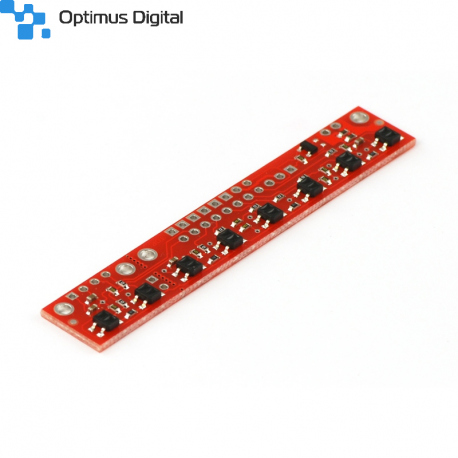 View larger
View larger
QTR-8A Reflective Infrared Sensor Bar
0104110000010247
New product
This sensor module has 8 IR LED/phototransistor pairs mounted on a 0.375" pitch, making it a great detector for a line-following robot. Pairs of LEDs are arranged in series to halve current consumption, and a MOSFET allows the LEDs to be turned off for additional sensing or power-savings options. Each sensor provides a separate analog voltage output.
See description for more details about the product.
Add to cart now!
This product is no longer in stock
- Write a review
- Remove this product from my favorite's list.
- Add this product to my list of favorites.
More info
Description
Note: The QTR-8A reflectance sensor array requires analog inputs to take readings. The similar QTR-8RC reflectance sensor array is available with digital I/O-compatible outputs, and the reflectance sensor is available individually as a QTR-1A reflectance sensor or QTR-1RC reflectance sensor.
Functional Description
The QTR-8A reflectance sensor array is intended as a line sensor, but it can be used as a general-purpose proximity or reflectance sensor. The module is a convenient carrier for eight IR emitter and receiver (phototransistor) pairs evenly spaced at intervals of 0.375" (9.525 mm). Each phototransistor is connected to a pull-up resistor to form a voltage divider that produces an analog voltage output between 0 V and VIN (which is typically 5 V) as a function of the reflected IR. Lower output voltage is an indication of greater reflection.
The outputs are all independent, but the LEDs are arranged in pairs to halve current consumption. The LEDs are controlled by a MOSFET with a gate normally pulled high, allowing the LEDs to be turned off by setting the MOSFET gate to a low voltage. Turning the LEDs off might be advantageous for limiting power consumption when the sensors are not in use or for varying the effective brightness of the LEDs through PWM control.
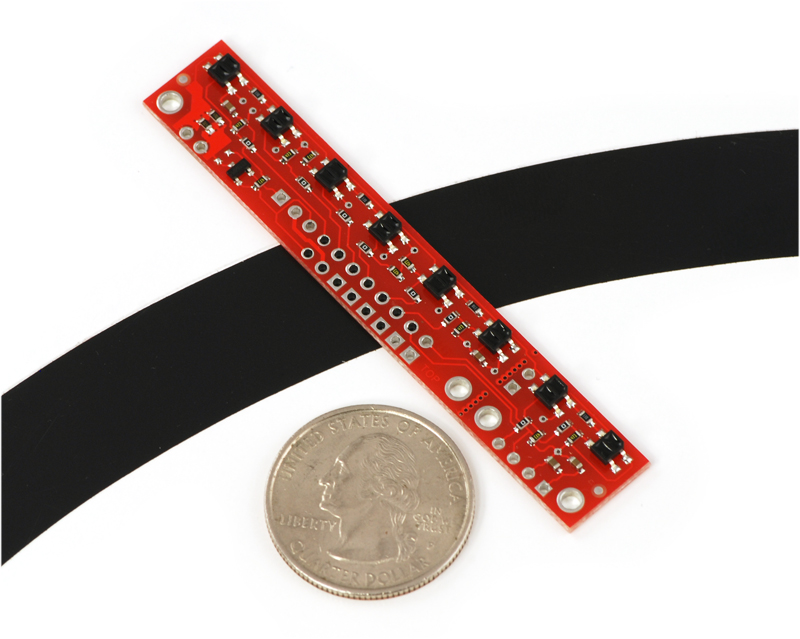
The LED current-limiting resistors for 5 V operation are arranged in two stages; this allows a simple bypass of one stage to enable operation at 3.3 V. The LED current is approximately 20-25 mA, making the total board consumption just under 100 mA. The schematic diagram of the module is shown below:

For a similar array with three sensors, consider our QTR-3A reflectance sensor array. The sensors on the QTR-8A are also available individually as the QTR-1A reflectance sensor, and the QTR-L-1A is an alternative designed to be used with the board perpendicular to the surface.
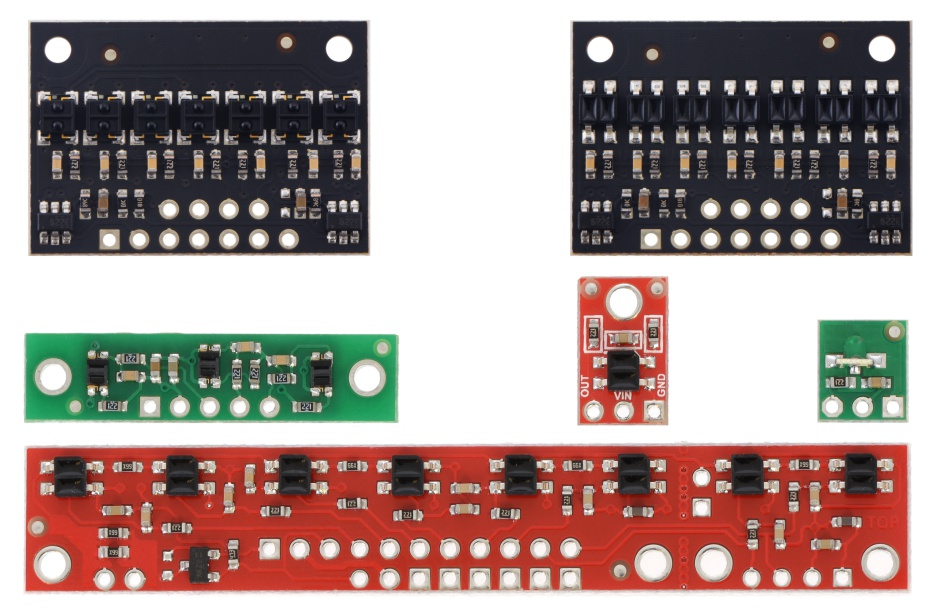
QTR sensor size comparison. Top row: QTRX-HD-07, QTR-HD-07; middle row: QTR-3, QTR-1, QTR-L-1; bottom row: QTR-8.
Specifications
• Dimensions: 2.95" x 0.5" x 0.125" (without header pins installed)
• Operating voltage: 3.3-5.0 V
• Supply current: 100 mA
• Output format: 8 analog voltages
• Output voltage range: 0 V to supplied voltage
• Optimal sensing distance: 0.125" (3 mm)
• Maximum recommended sensing distance: 0.25" (6 mm)
• Weight without header pins: 0.11 oz (3.09 g)
Interfacing with the QTR-8A Outputs
There are several ways you can interface with the QTR-8A outputs:
• Use a microcontroller’s analog-to-digital converter (ADC) to measure the voltages.
• Use a comparator with an adjustable threshold to convert each analog voltage into a digital (i.e. black/white) signal that can be read by the digital I/O line of a microcontroller.
• Connect each output directly to a digital I/O line of a microcontroller and rely upon its internal comparator.
This last method will work if you are able to get high reflectance from your white surface as depicted in the left image, but will probably fail if you have a lower-reflectance signal profile like the one on the right.
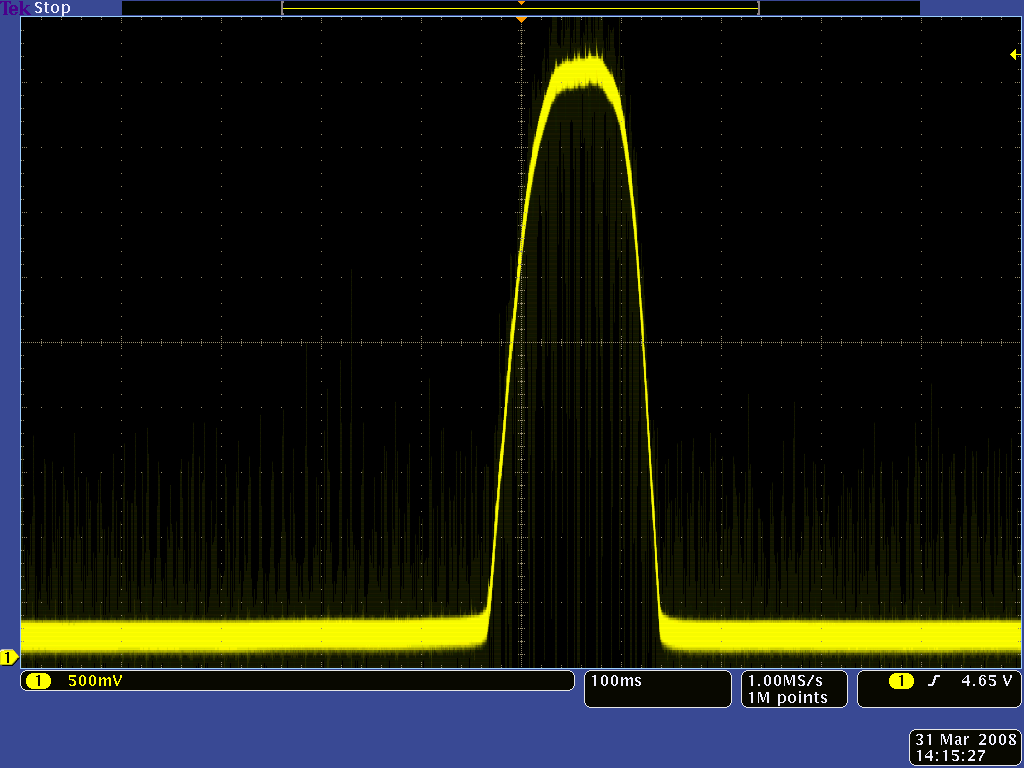
QTR-1A output 1/8" away from a spinning white disk with a black line on it.
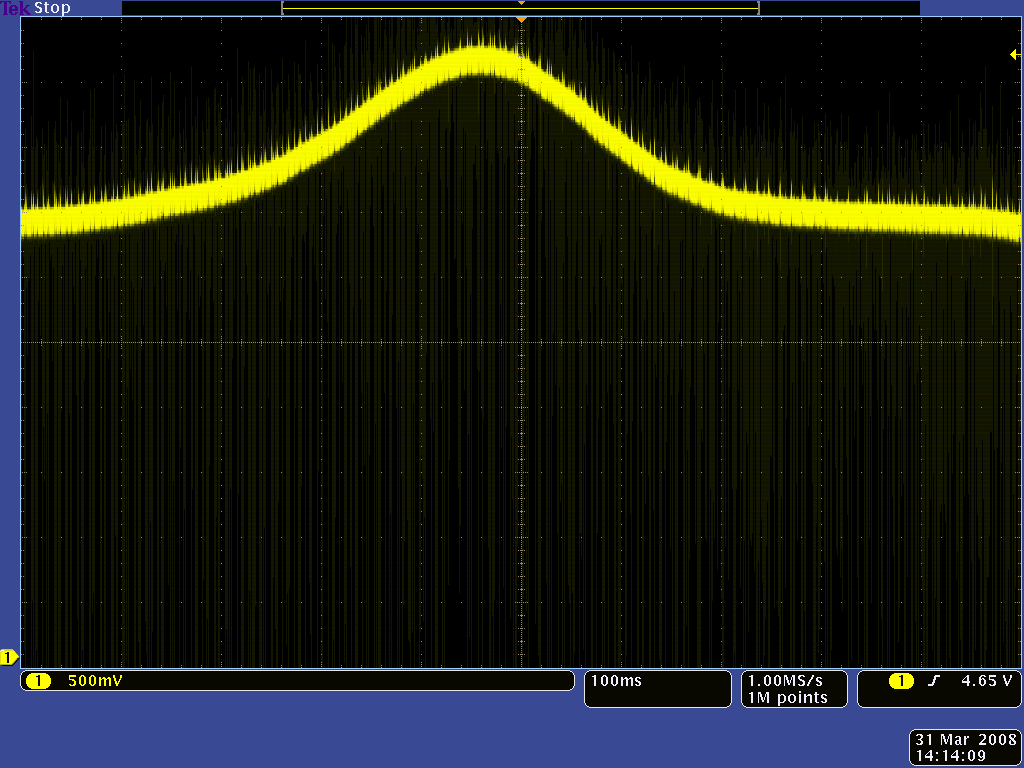
QTR-1A output 3/8" away from a spinning white disk with a black line on it.
Our Pololu AVR library provides functions that make it easy to use these sensors with the Orangutan robot controllers. We also have a Arduino library for these sensors.
Breaking the Module in Two
If you don’t need or cannot fit all eight sensors, you can break off two sensors and still use all 8 sensors as two separate modules, as shown below. The PCB can be scored from both sides along the perforation and then bent until it snaps apart. Each of the two resulting pieces will function as an independent line sensor.

Don't delay. Buy today.
Add to cart now!
Reviews
Customers who bought this product also bought:
-
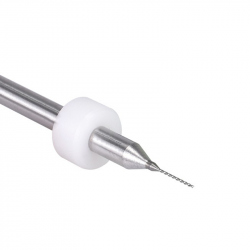
Nozzle...
Nozzle Cleaning Tool - White - 0.3 mm See...
$0.84
-
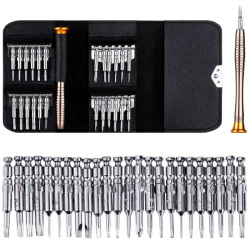
25-in-1...
25-in-1 Screwdriver Set
$6.72
-
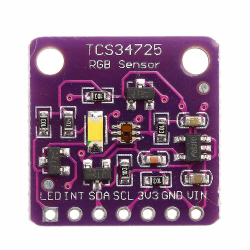
TCS34725 RGB...
TCS34725 RGB Color Sensor Module
$12.00
-
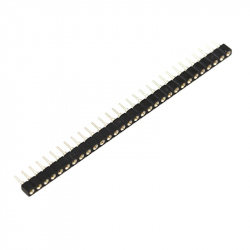
Breakable...
Breakable 2.54 mm Female Pin Header 40p See...
$0.61
-
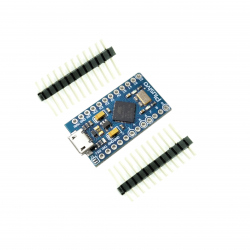
Development...
This development board is the best choice for...
$6.72
-
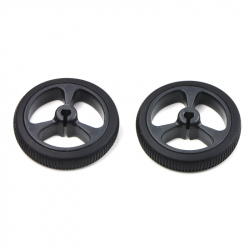
Wheel 32×7mm...
These black plastic wheels have silicone tires...
$6.24
-

Solder Paste...
Soldering copper Silver Zinc and nickel...
$1.68
-

Motor 130-08400
This is brushed DC Motor 130 size with spindle...
$1.19
-
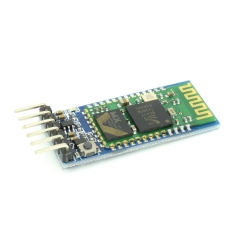
HC-05 Master...
The HC-05 Bluetooth module is a high...
$6.74
-
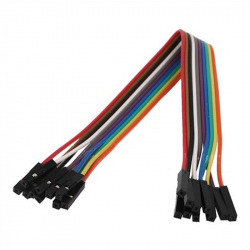
15 cm 10p...
Ideal wires for making connections between...
$0.96














